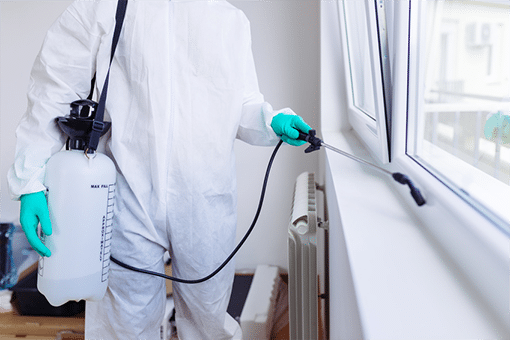Efficient Bed Bug Treatment: Get Rid Of Infestations Safely!
Wiki Article
Professional Bug Control Techniques for Long-Term Results
In the realm of parasite control, accomplishing sustained efficiency and long-term outcomes calls for a precise strategy that transcends mere elimination. Professional bug control techniques encapsulate a comprehensive method that begins with a complete inspection and assessment, followed by exact insect recognition to comprehend their habits patterns. The execution of Integrated Insect Monitoring (IPM) concepts, coupled with eco-conscious treatments, creates the cornerstone of sustainable bug obliteration. Nonetheless, real test lies in the recurring tracking and maintenance of the treated locations, making certain a pest-free setting for the direct future. By delving into the details of these techniques, a much deeper understanding of expert pest control approaches for sustaining end results arises.Assessment and Evaluation
Upon entering a home for pest control services, the first step is an extensive evaluation and assessment to recognize the extent of the infestation and determine one of the most effective therapy plan. Professional pest control specialists are educated to meticulously take a look at the premises, trying to find indicators of insect activity such as droppings, chomp marks, nests, or any kind of architectural damage. They will additionally evaluate the problems that might be drawing in pests, such as food resources, water leakages, or entry points.
Insect Recognition and Behavior

Moreover, recognizing the habits of the identified bug is key to applying reliable control procedures. Understanding where parasites nest, what they feed on, and their activity patterns can help pest control professionals design approaches to remove them successfully.
Integrated Pest Administration (IPM)
Integrated Pest Administration (IPM) approaches incorporate multiple techniques to regulate and protect against pest problems in a lasting and ecologically friendly manner. exterminator. By incorporating techniques such as organic control, habitat control, adjustment of social methods, and the usage of resistant varieties, IPM intends to decrease the use of chemical pesticidesOne of the key principles of IPM is the focus on avoidance. This proactive method entails monitoring pest populaces regularly to find any type of potential problems before they intensify. By identifying pest troubles at an early stage, pest control procedures can be executed swiftly and successfully.
Moreover, IPM promotes making use of safe parasite control approaches whenever possible. This can consist of using natural killers of the parasites, presenting beneficial insects, or making use of pheromones to interfere with breeding patterns. By reducing reliance on chemical pesticides, IPM not just protects the environment but likewise assists keep a balance in the ecosystem.
Environmentally-Friendly Therapies
Executing eco-conscious methods in pest control treatments can successfully address invasions while focusing on ecological sustainability. Environmentally-friendly treatments focus on decreasing the influence of bug control methods on communities, non-target organisms, and human health.An additional key element of environmentally-friendly treatments is using natural and naturally degradable products that damage down rapidly without leaving dangerous deposits in the atmosphere. Agricultural insecticides stemmed from plants like chrysanthemums or neem supply effective parasite control while posturing minimal threat to non-target types. Additionally, employing methods like warm treatments or pheromone traps can target certain pests with accuracy, minimizing the total environmental impact of pest control techniques.
Recurring Tracking and Upkeep
Regular monitoring and upkeep are crucial components of efficient parasite control administration. Continuous surveillance plays a vital function in making certain that bug invasions are found very early and taken care of quickly. Regular inspections by experienced professionals are necessary to recognize any kind of indicators of bug activity, assess the efficiency of previous therapies, and make adjustments to the parasite control plan as required. By monitoring parasite populations in time, pest control professionals can track patterns, expect possible concerns, and carry out safety nets to minimize the danger of future problems.
In enhancement to surveillance, maintenance techniques are crucial for long-term pest control success. This consists of implementing proper hygiene procedures to get rid of potential food and water sources for pest control parasites, securing off entrance indicate prevent pests from getting in the facilities, and attending to any kind of architectural issues that could promote pest infestations (exterminator near me). By integrating recurring surveillance and upkeep into an incorporated pest monitoring approach, services can make certain a pest-free setting and guard their property against expensive damages and health risks
Conclusion
Finally, making use of professional insect control methods such as complete inspection and analysis, precise pest identification and understanding of their actions, integrated parasite management methods, environmentally-friendly therapies, and recurring surveillance and upkeep are important for achieving long-term cause bug control. By implementing these approaches, individuals can properly handle bug invasions and keep a pest-free atmosphere in a lasting way.Report this wiki page